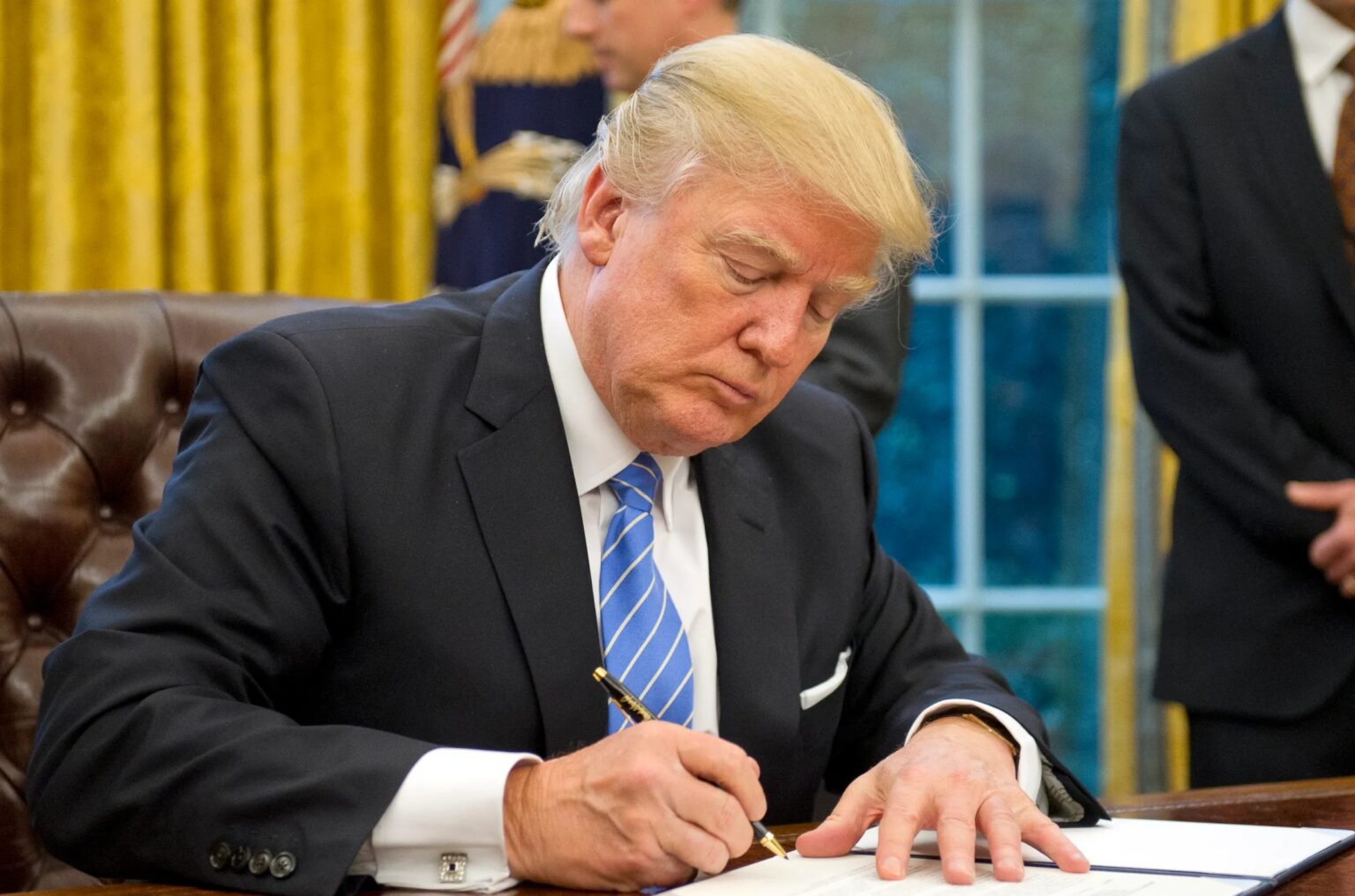The potential for integrating cryptocurrencies into traditional financial instruments like retirement savings plans is a topic generating significant attention. As digital currencies become more mainstream, the possibility of including them in 401(k) plans represents a notable shift in the financial landscape. This change could offer everyday investors new opportunities to diversify their portfolios with assets like Bitcoin and Ethereum within tax-advantaged accounts. Yet, this evolution in investment options brings with it a set of complex challenges that must be navigated with care.
The Impact of President Trump’s Executive Order on Cryptocurrency in Retirement Plans
The recent executive directive from President Donald Trump aims to pave the way for cryptocurrencies, alongside private equity and real estate, to be included in retirement plans. This move, which suggests a significant policy shift, requires the Department of Labor to re-evaluate the existing Employee Retirement Income Security Act (ERISA) regulations. With approximately $8.7 trillion held in 401(k) savings, even minimal allocations into cryptocurrencies could accumulate substantial investment volumes.
Implications of Cryptocurrency Integration into 401(k) Plans
The potential for integrating digital currencies into these plans is vast. Leading financial entities like Fidelity, BlackRock, and T. Rowe Price express interest in packaging cryptocurrencies into retirement-friendly investment vehicles. This inclusion could grant broad access to these digital assets, enabling individuals to gain exposure through existing tax-advantaged accounts. However, the transition is far from straightforward.
Challenges for Fiduciaries and Plan Providers
Fiduciary duties under ERISA guidelines necessitate prudent actions by plan sponsors, which raises concerns about incorporating volatile assets like cryptocurrencies. Before significant crypto allocations become a reality in retirement portfolios, both regulatory approvals and operational solutions must be established. This includes implementing effective custody solutions, secure audit trails, and cost-efficient product structures that align with the low-fee nature typical of 401(k) offerings.
Risk Management and Compliance
Litigation risk remains a substantial concern, particularly if participants suffer from significant asset devaluation. Plan providers must tread carefully, balancing the desire to innovate with the necessity of protecting investors. Regulatory bodies are expected to weigh investor protection against expanding access, ensuring that any product offerings are both safe and advantageous for participants.
Market Reaction and Institutional Interest
Noteworthy market movements reflect the potential impact of the executive order. Bitcoin, for example, observed a value surge, mirroring growing interest from institutional investors. Products like BlackRock’s Bitcoin Trust illustrate a burgeoning demand from large-scale investors, suggesting a wider trend towards institutional acceptance of digital currencies as a legitimate asset class.
An Incremental Integration
The transition to including cryptocurrencies in retirement plans will likely be gradual. Product development teams within major investment firms will need to conduct extensive piloting of custody and compliance mechanisms. Initial offerings may focus on limited, optional allocations to mitigate risk while testing market demand. Over time, these controlled steps could channel significant amounts of retirement capital toward digital currencies.
“`html
What are the potential benefits of including cryptocurrencies in retirement plans?
Incorporating cryptocurrencies into retirement plans can offer diversification benefits, potentially enhancing asset growth over time. They provide exposure to a rapidly growing sector and may offer inflation hedging properties, adding resilience to an investment portfolio.
What risks are associated with adding cryptocurrencies to 401(k) plans?
The primary risks include high volatility, regulatory changes, and the need for secure custody solutions. Market fluctuations can lead to significant value changes in short periods, and regulatory environments can evolve, impacting investment strategies.
How are fiduciary responsibilities affected by this integration?
Fiduciaries must ensure that investment options are selected prudently and in the best interests of participants. The volatile nature of cryptocurrencies necessitates rigorous due diligence and risk management strategies to meet these responsibilities.
Is there a timeline for when cryptocurrencies might be included in 401(k) plans?
There is no set timeline, as the integration depends on regulatory approvals, product development, and market readiness. Initial steps towards inclusion will be cautious and incremental, focusing on small allocations to test feasibility and demand.
“`

